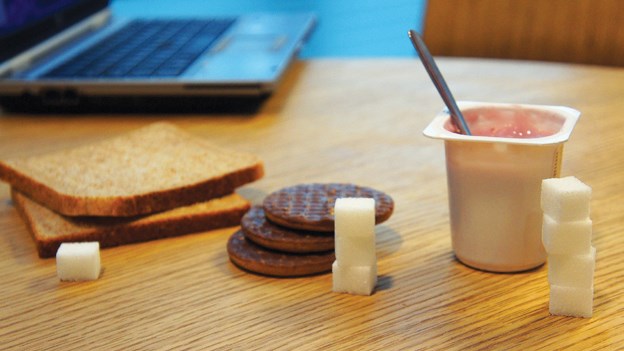Not for the first time we hear that sugar might not be good for us. That is not news, but the evidence keeps mounting and it’s not looking good for an ingredient added to so many foods. In the past we worried about sugar because it might push us towards diabetes, lead to obesity or cause cavities. That is all still true, but the facts are much worse as recent research links sugar to more disease and negative health effects.
Before anyone panics, we should say we are talking about added sugar, not the kind found naturally in foods like fruit or dairy products. Added sugars are overwhelmingly white sugar (sucrose) and high-fructose corn syrup, but also include honey, molasses, agave and fruit juice concentrate. The latter may sound healthier, but they are not.
As expected, we find added sugar in candies, cookies and soft drinks, but also in a lot of places you would not think to look, like canned soup, bread, some yogurt, pasta sauce, ketchup, baked beans and more. One of the effects of the battle against added fats was an increase in the use of sugars to fill in for the taste lost with the reduced fat. Unfortunately, research now links high levels of added sugar to multiple adverse health effects well beyond earlier concerns.
National data for American adults over 20 years shows that 10 per cent of people who consumed the most added sugar (a quarter of their daily calories or more) were almost three times more likely to die from cardiovascular disease than those who consumed the least. This is irrespective of other risk factors from activity level to age to ethnicity.
Analysis of a dozen clinical trials in 2014 found that relatively high sugar intake increased blood pressure by up to eight points on average. The findings suggested added sugar may contribute more to hypertension than added salt.
Blood cholesterol is another concern. A study of young adults by New Zealand researchers found that sugary beverages containing high-fructose corn syrup raised LDL (“bad”) cholesterol in as little as two weeks. And we can’t forget diabetes. The Mayo Clinic reports that added sugar, especially fructose, is a “principal driver” of type 2 diabetes. Table sugar is half fructose while high-fructose corn syrup is usually about 60 per cent fructose.
The Canadian Heart & Stroke Foundation, among others, suggests we get no more than 10 per cent of total daily calories from added sugar – that means about 48 grams for a 2,000 calorie diet (one can of pop provides 85 per cent of that total). They also offer good ideas to make it easier to avoid added sugar. Thirsty? Instead of reaching for a giant bucket of pop or even a can, drink water. Want flavour? Add a slice of orange or lemon, or maybe fresh mint. And instead of ordering that fancy coffee drink with all that syrup and added sugars, try a latté with a sprinkle of nutmeg or cinnamon. Instead of a chai latté, order chai tea and add steamed milk.
Packaged foods offer another opportunity to find added sugars. Read the nutrition facts table and the ingredient list with an eye to the total amount of sugar. The ingredient list will tell you where the sugar is coming from. Watch out for added sugars that come from sources such as glucose, fructose, sucrose, honey, evaporated cane juice, molasses, corn syrup, dextrose or concentrated fruit juice. All supply calories with no nutritional benefits.
Sugar will still cause cavities and help us put on too much weight, but we now know that added sugar is a problem all on its own, a risk independent of other poor dietary choices.



